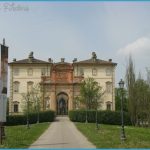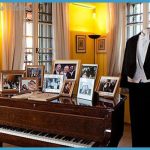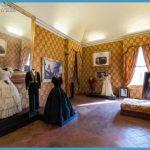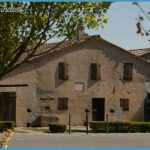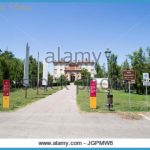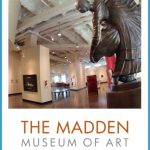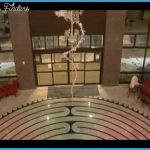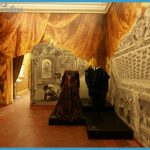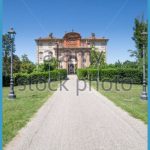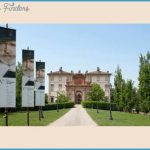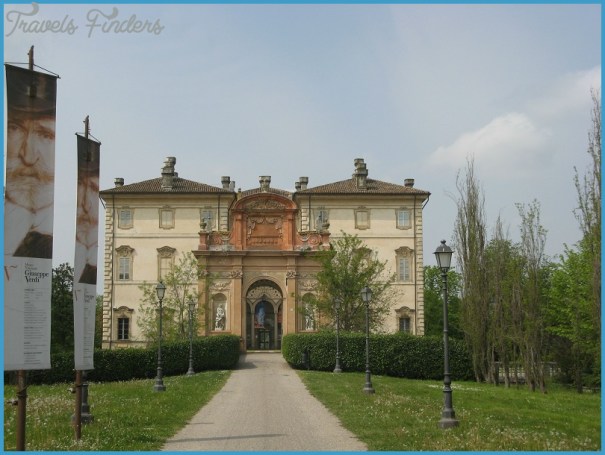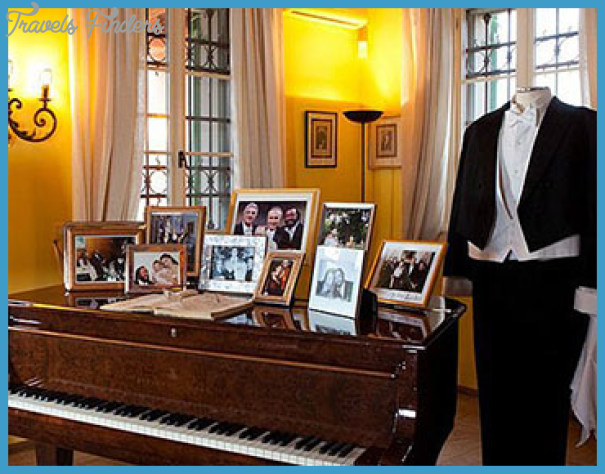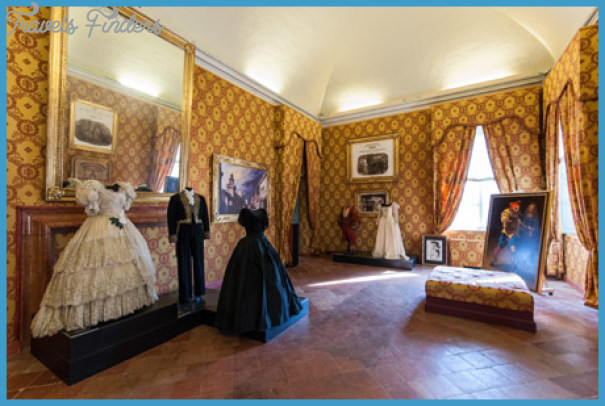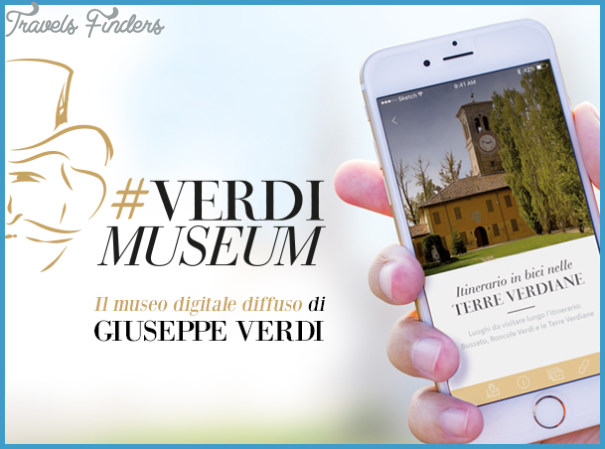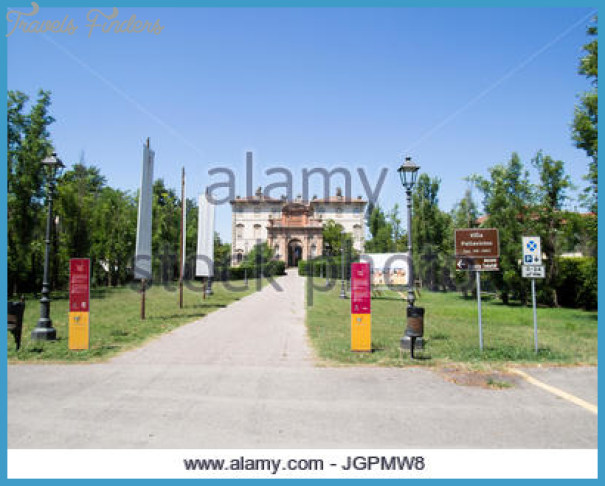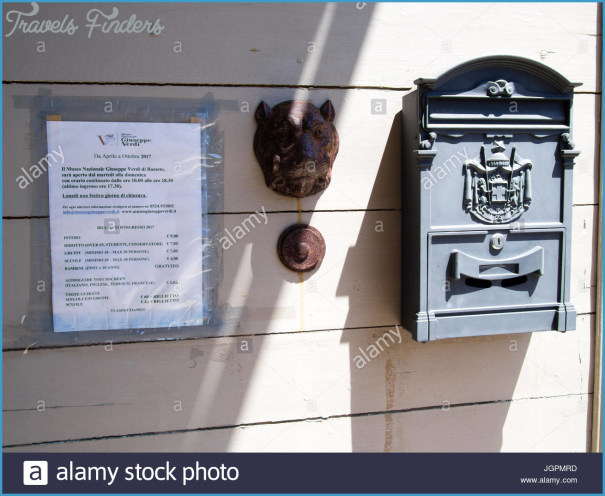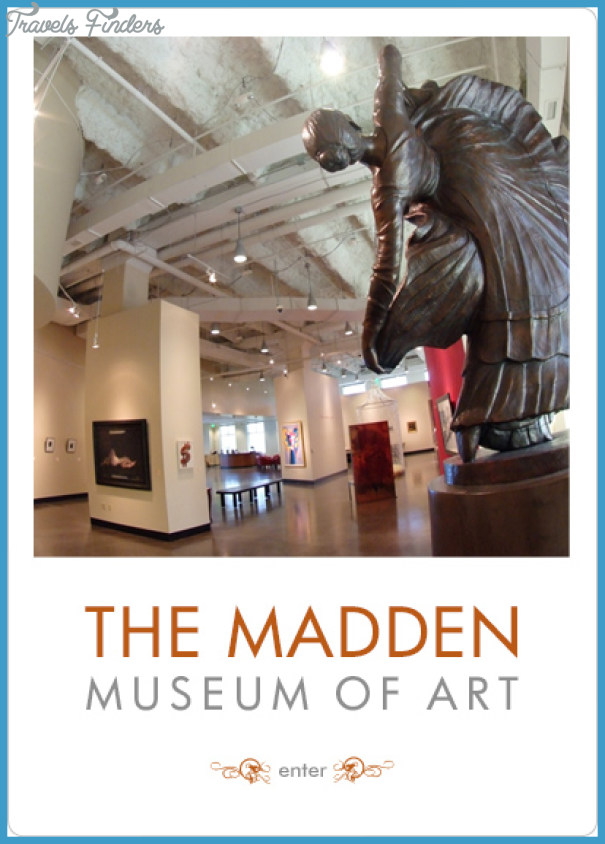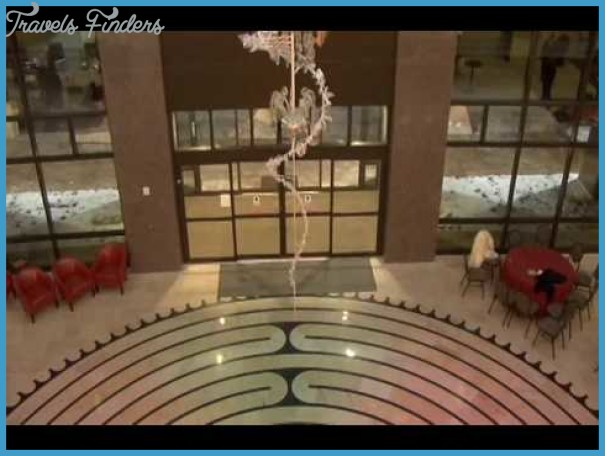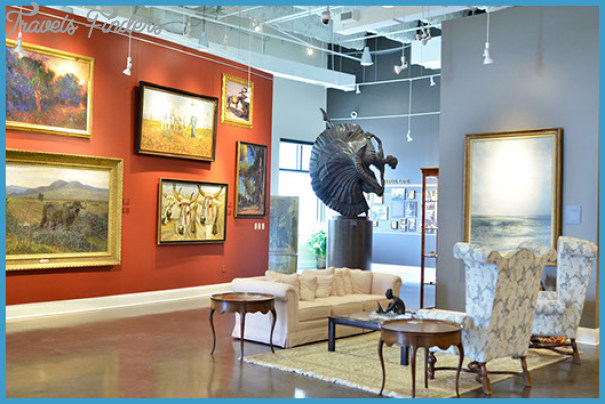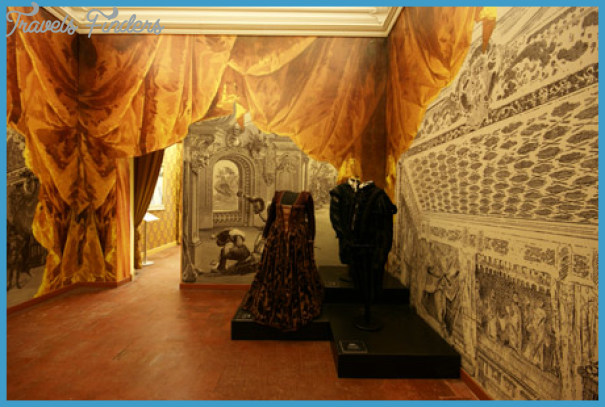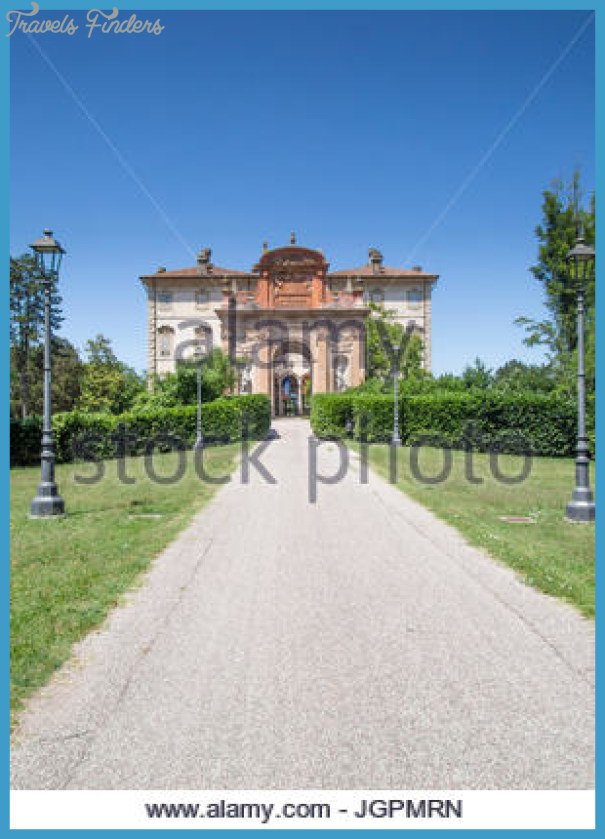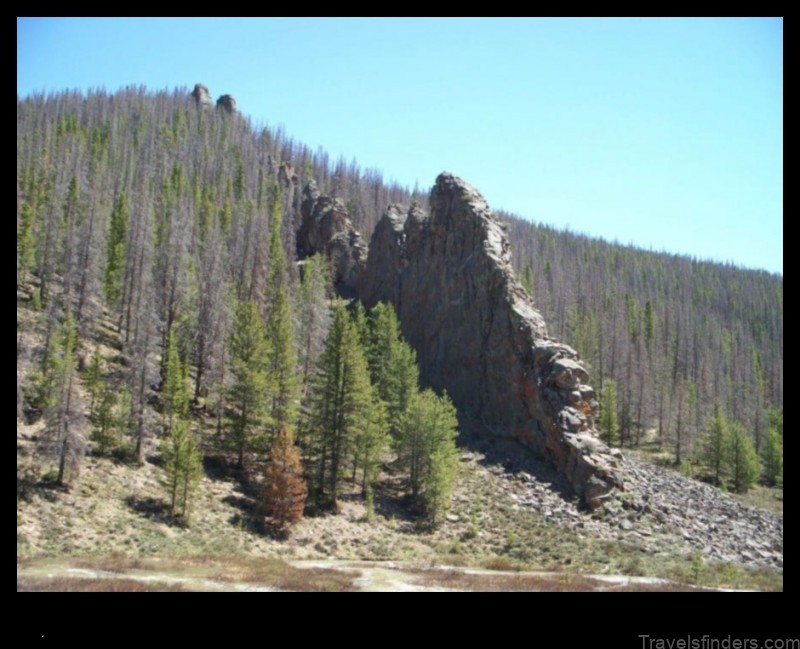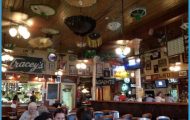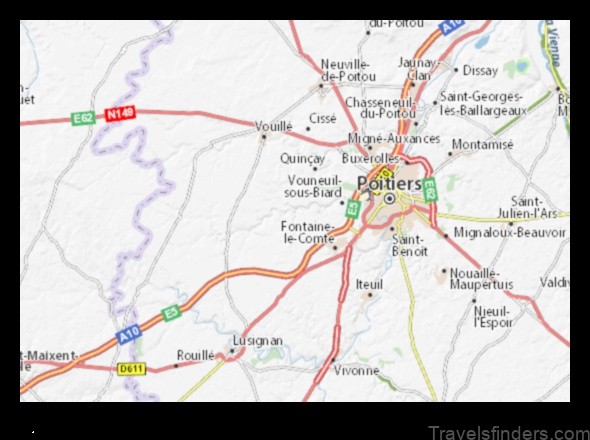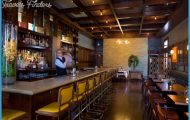VERDI MUSEUM
The museums and memorials that commemorate Verdi cover, literally, from his birth to his death, as befits the greatest and most beloved of Italian composers. The last of them apart, all lie in a relatively small area, that part of the country within a triangle whose vertices are Cremona in the north, Piacenza in the west and Parma in the south-east.
The actual place of his birth was the village of Roncole – now called Roncole Verdi – some five kilometres south of the town of Busseto. Verdi always insisted on his peasant origins, from an illiterate family; in fact he came from a line of small landowners and tradespeople, and his father, Carlo, kept the local inn, which served too as village shop and post office.
There is some question about the actual house of his birth. The most comprehensive of Verdi’s biographers, Mary Jane Phillips-Matz, holds that he was born in the Osteria Vecchia, in the centre of Roncole, a house built in 1695 which the family leased and occupied from 1791 to 1830; half of that house still stands, and exactly matches a 1729 description of the property in the Fidenza diocesan archives and Carlo Verdi’s lease renewal of 1827. Others are content to accept what the plaque, put up in 1872 on the official birthplace’, a house standing at a junction on the road between Cremona and Fidenza, proclaims: Questo abituro dove il 10 Ottobre 1813 la prima aura spiro il musical genio del VERDI’ (‘In this dwelling on 10 October 1813 the musical genius of Verdi took its first breath’).
Although Verdi himself, perhaps not the most dependable witness, had a picture of that house at his villa, Sant’Agata, he denied that he was born there; he was born, he said, in a different house nearby, burned down by the Russians’ – which seems to represent a confusion with another incident of his early years, when the area was invaded by the armies fighting Napoleon. It is the official birthplace in which he is commemorated. The property belonged to the Pallavicino family, who later gave it to the Busseto municipality. The Verdi family would have moved out in the 1840s, to the farm Giuseppe had recently bought outside Roncole and then to his new villa at Sant’Agata. The Pallavicinos put up the 1872 plaque. The Verdi’s official birthplace, Roncole house was declared a national monument in 1901, just after Verdi’s death, when a further plaque was installed (given by the poor of Roncole who had benefited from Verdi’s gifts), and in 1913 a bronze bust by G. Cantu was placed in the garden; in 1962 it became a museum and in 2000 it was refurbished for the centenary.
Its supposed organization as an inn and coaching house, and family home, is clearly shown. On the ground floor, there is a north-facing room that would have been the pantry and wine store, and an indoor stable where the pigs, rabbits and chickens would have been kept. The front room, where the original ceiling and doors survive, is set out as a dining-room and kitchen. What is now the admissions office was the village shop. No original furniture survives; the items there now are made from modern poplar but using period working techniques. Upstairs is largely empty; one room may have been used for tavern stocks, another for breeding the silkworms that were a necessity for the trade of Verdi’s mother, who did weaving to augment the family income. In the room remembered as Verdi’s parents’ bedroom, and consequently the likeliest room of his birth, there is a straw mattress and a plaque above the bed; a darker room overlooking the stable is the one supposed to have served for Verdi and his young sister, and a rear room would have housed passing guests. The whole interior is painted with lime wash, as it would have been in Verdi’s day.
VERDI MUSEUM Photo Gallery
Close to the house is the medieval church, San Michele Arcangelo, where Verdi was baptized and where as a child he played the organ; the instrument he would have used dates from 1797 and has been restored a number of times, most recently in 1964.
Roncole falls within the administrative area of Busseto, now a town of some 40,000, and the Verdi town par excellence. It has a Piazza Verdi, dominated since the 1913 centenary by a bronze sculpture of the maestro, the work of Luigi Secchi. On one side of it is the Teatro Verdi, built as a tribute to him in the 1850s and 60s; Verdi gave money, and owned a box, but.
Rights were not granted to include these illustrations in electronic media Please refer to print publication was opposed to the idea of building a new theatre and absented himself conspicuously from the opening in his honour and never set foot in it. Seating 300, it is anyway too small to take his operas comfortably. Verdi lived in the town for much of his life. Two of his homes there have been museums. One is the Casa Barezzi, the house that belonged to Antonio Barezzi, a rich merchant and music lover, Verdi’s first and most generous patron and father of his first wife, Margherita. Verdi spent several years in the house as a young man and was conscious of the depth of his debt to Barezzi, whom he regarded as a second father. Owned and now loaned by a local bank, it was refitted for the 2001 centenary and reopened as the Museo Verdiano di Casa Barezzi. The contents, from a collection assembled by a former Busseto mayor, Gianfranco Stefanini, were presented to the Amici di Verdi, the organization responsible for the museum. Even before Verdi’s time, the main salon was used for musical events, and it still is, for concerts and conferences: a lofty blue room, seating about 100, with a fine stucco ceiling and an elegant parquet floor. The Tomaschek piano that Verdi used when composing during his time here, and which he was playing when in 1867 Barezzi was dying in the next room, is there, though not in playing condition (there is a modern concert grand too). There are portraits, of Barezzi and Margherita among others, a Verdi death mask and a cast of his hand.
In the rooms running alongside the salon is a series of attractive displays, thematically organized. The first deals with the young Verdi, with a portrait from the time of his marriage to Margherita (who died in 1840, aged 26), documents, including his first La Scala commission and letters, and autographs of pieces he wrote as a pupil of the Busseto organist Ferdinando Provesi. One alcove is devoted to Emanuele Muzio, the conductor and composer, also a protege of Barezzi’s and later Verdi’s only pupil, another to the concerts of the Societa Filarmonica Busseto, founded in 1816 and run by Barezzi. Giuseppina Strepponi, the singer, Verdi’s loving companion in Busseto (to the dismay of the locals) and later his wife, is represented by a portrait and prints, and by their marriage certificate and Verdi’s letters to her. There are portraits of the older Verdi, among them one of 1887 by Francesco Paolo Michetti, sketches by the publisher Ricordi of Verdi and Boito, a model for a monument proposed for Trieste, posters for the initial productions at the Teatro Verdi in 1868 (Rigoletto and Un ballo in maschera) and a collection of prints of singers who created Verdi roles. The long table at which Verdi and the Barezzis celebrated his marriage to Margherita is also there, and one display is devoted to Verdi’s death – his obituaries and the public ceremonies surrounding his funeral, his burial and his final interment in the Casa di Riposo in Milan. A smaller room is given over to Toscanini and his Verdian activities in Busseto, the original manuscript of Gabriele d’Annunzio’s Il morte di Giuseppe Verdi’, and the 2001 centenary celebrations at La Scala under Riccardo Muti.
A short distance down the Via Roma from the Casa Barezzi is the Palazzo Orlandi. On a visit to Busseto in 1845, Verdi bought a house from a former mayor and musical patron in the town, Contardo Cavalli; it was known as the Palazzo Cavalli and had earlier been called the Palazzo Dordoni. He moved in, with Strepponi, in the summer of 1849, and he lived there – although he was away a great deal, mostly for opera premieres and revivals – until the autumn of 1853. Among the operas he composed there are Rigoletto and Il trovatore. Verdi installed his father in the house, where he died in 1867; he later sold it to Strepponi, who after his death sold it (for the benefit of the needy of Busseto) to the Orlandi family. It was eventually opened as a Verdi museum: it housed in the main first-floor salon a Pleyel grand piano, claimed as Strepponi’s, as well as busts and contemporary clothing, a collection
Rights were not granted to include these illustrations in electronic media. close to the composer. In poor condition, the museum ceased functioning soon after the Verdi centenary and in 2005 was offered for sale. On the southern edge of Busseto, close to the approach from Roncole, lies the Villa Pallavicino, once the home of the local noble, property-owning family. This sumptuous 16th-century palace, the most splendid in the region, moated and with elegant balustrades, has been the Busseto Museo Civico since 1959. It formerly displayed many of the items now in the Casa Barezzi. The museum was closed after the 2001 centenary for complete refurbishment; rumour has it that 27 rooms will be available, and the coincidence of that figure with the number of operas Verdi composed (at least by one way of reckoning) has suggested a room-by-room, opera-by-opera display. From Roncole, through Busseto, Verdi pilgrims can pursue the maestro by taking the road northwards to Cremona: soon, after about three kilometres, they will reach Sant’Agata, his home for almost 50 years. Since the end of the 16th century the Verdi family had owned land in the area of Sant’Agata di Villanova sull’Arda (across the river Ongina, and so in the Piacenza rather than the Parma province), and Verdi had long cherished the ambition of reclaiming’ the family territory. He bought a farm there in 1848 and soon started transforming the farmhouse into a spacious villa. His parents moved there in 1851 and he and
Salon of the Verdi flat in the Palazzo Orlandi, Busseto of batons that belonged to various conductors, and some personal items (books, umbrellas, top hats, a cape) said to be Verdi’s. There are photographs and pictures in the dining-room, and a further narrow room, in which it is thought that Strepponi made lace, has a number of facsimiles and photographs including one, along with a bust, of Teresa Stolz, the leading Verdi soprano of the 1960s and 70s, who was for a time
Rights were not granted to include these illustrations in electronic media. Rights were not granted to include these illustrations in electronic media.
Giuseppina soon followed. The house is still owned by the Carrara Verdi family, his heirs through his adopted daughter Filomena Maria.
The parts of it that form a museum, essentially the ground floor of the main building, can be seen only on guided tours, which take some 45 minutes (English ones are available by prior arrangement). Visitors can do no more than peer through the windows at some areas, unaided by lighting, for example the ceremonial and elaborately furnished Sala Rosa in which Verdi received his visitors. The rooms are not large. In Strepponi’s bedroom, where in 1897 she died, the furniture is in Genovese Baroque style, inlaid, the bed heavily canopied, with her bust (1842) at the end. There is a portrait of Verdi in old age and one of the two of them in the 1860s, a portrait too of their dog (Lulu, buried in the gardens) and their pet parrot. On one wall is a Falstaff painting by the designer of the 1893 premiere of Verdi’s opera. Bronze figurines of Manzoni and Verdi stand above the fireplace, and on the walls are a pair of landscapes attributed to Salvator Rosa. A piano that had belonged to Strepponi’s father, who was a maestro di cappella, which Verdi used in the 1850s and 60s, stands in her dressing-room. Busts of Verdi, Ponchielli and Catalani take their place along with the pet parrot and a pheasant, stuffed. Some of Strepponi’s stage costumes are there; so is the case that Verdi took on the journey to St Petersburg for the premiere of La forza del destino. There are bookcases and on the walls are prints of singers.
Verdi’s own bedroom was also his working room. In it, besides his bed, are his piano (an 1870 Erard grand), his desk, his library (miniature scores of Viennese classical string quartets, dictionaries, the works of Dante, Shakespeare, Milton and Byron and much else), busts, paintings and a display case showing his commemorative medals and the white gloves he wore when conducting the Requiem. In the archive room are display cases with documents -some of them concerned with his polit- ical activities (among them a letter from Cavour), others with the estate, and his original, unsuccessful application for entry to Milan Conservatory – as well as portraits and photographs and some personal objects. The final room records Verdi’s death, on 27 January 1901: a re-creation of the room in the Hotel Grand et de Milan in which he died, though on a much smaller scale. The hotel donated the bed and other furniture to the Casa di Riposo that Verdi set up in Milan, from where it passed on to Sant’Agata in 1932 (for illustration of the room see p.6). The shirt he was wearing is there too, with a death mask, an impression of his hand, and the last portrait photographs of Verdi and Strepponi. The tour of the house takes in a walk round the large garden, which Verdi himself planned, past the wine store and the carriage house along the side of the villa, down the avenues of poplars and other trees (which include a number of exotic imported ones, such as the Chinese ginkgo), past the ice-house, the grotto and Lulu’s grave, to the miniature lake with its three bridges. (For illustration of the carriages and the grotto, see pp.42 and 51.) Verdi is of course commemorated all over Italy: most towns have at least a Via or Piazza Verdi, several have a Teatro Verdi. The large city closest to the Busseto district is Parma, home of the Istituto di Studi Verdiani, where the conservatory, named after Verdi’s friend and collaborator Arrigo Boito, has memorial rooms to Boito, Pizzetti and Toscanini; there is also a museum at the birthplace of Toscanini, Verdi’s greatest interpreter (see Boito and Toscanini). A Casa di Musica, established at the Palazzo Cusani in 2002, now accommodates the Istituto and the archive of the Teatro Regio, with material on the reception of Verdi in Parma and audiovisual facilities where Verdi operas can be seen and heard. By the Palazzo Pilotta is what must surely be the largest monument to any composer, a bas-relief in bronze, representing events to do with Verdi’s patriotic activ- ities, in which he is surrounded by allegorical figures.
In Milan, too, Verdi is celebrated. He is the dominant figure among the composers commemorated in the La Scala museum, which returned to the renovated opera house in 2005 after three years in a temporary home. It is rich in Verdiana: two whole rooms are devoted to Verdi, with numerous photos and portraits of him, Strepponi and his singers, several autograph manuscripts including some very early works and the Requiem, his first piano (a square of 1832), his armchair, his passport, his pocket watch, a bracelet he gave to Strepponi, a death mask and a plaster cast of his right hand, as well as medals and other honours.
Close to the opera house, just along the Via Manzoni, is the Hotel Grand et de Milan, where Verdi died. His actual room, the Sala Verdi’, Suite 105, is now used for receptions and other purposes, and is not of course as it was, but it is maintained as a memorial and visitors who ask to see it are taken up. The furnishing, contemporary with Verdi, includes a black carved desk and there is a print of La Scala and of course a portrait of Verdi. The Casa di Riposo per Musicisti Fondazione Giuseppe Verdi, the retirement home for musicians that Verdi established and endowed in 1899, is a short bus ride away, at Piazza Buonarroti; Boito and Toscanini are among those who further endowed it. There are two rooms containing Verdi items. One is a barrel-vaulted dining-room, with a suite The Casa di Riposo per Musicisti Fondazione Giuseppe Verdi, Milan of furniture from Verdi’s home during his French years, acquired originally by Strepponi, taken to Genoa and given to the Casa by Ricordi (a table, eight chairs, a dresser, sideboards); the other room has a large Verdi portrait of 1886 by Boldini and a deathbed portrait by Stragliati, a glass case with Verdi’s spinet’, and several other busts and portraits, of Barezzi and Strepponi as well as Verdi himself. Between the two rooms is a glass case with Verdi’s evening clothes. Visitors are welcome; Verdi’s grave, in which he was interred on 26 February 1901, with Strepponi, is not of course in the chapel (he was a non-believer) but close to it; a fine statue of him stands outside in the centre of the piazza.

